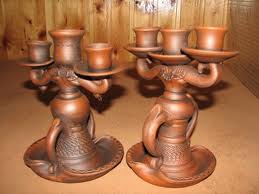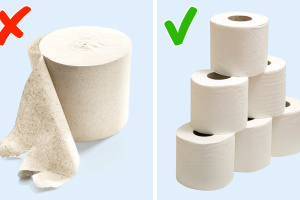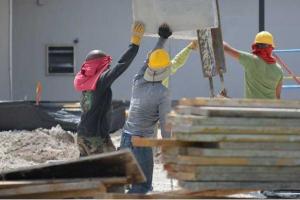Pottery is one of the oldest in the world. A person knew how to make clay products even in the Neolithic era, this is the 9th-5th centuries BC, as evidenced by  ancient products and their fragments that have come down to us.
ancient products and their fragments that have come down to us.
The earliest manufacturers of ceramics are considered Chinese, and the most enamelled products were found in Egypt. In the time of Ancient Russia, around the 3rd century BC, clay production began at the same time, and the first pottery workshop appeared on our historical land.
The basis of pottery is clay. When it is mixed with water, a plastic mass is formed, which has the property of retaining its shape well. Clay is a sedimentary rock containing impurities of both organic and mineral origin. Clay has a number of basic characteristics, such as shrinkage, ductility, sinterability, refractoriness, clay varies in color and texture.
Initially, clay was formed by hands, but after the potter's wheel was invented (III century BC), it became possible to improve the manufacturing process of products, they became more diverse, and the walls of the vessels became thinner. Since then, the principle of operation and design has not been practically changed; there has been an improvement in only the drive device. Now, of course, electric motors replaced footwork. Also added a variety of pottery appliances and tools. For molding pottery Now they use templates, grids, calipers, pottery knives and other devices. When painting use brushes, spray guns and airbrushes.
The pottery workshop now, as before, involves the same stages in the production of products:
- search and extraction of feedstock;
- its preparation;
- production of molding materials;
- product design;
- surface treatment;
- drawing a picture (decor);
- glazing;
- drying;
- firing in the oven.
When decorating these products, glaze (glassy coating), underglaze and overglaze paints, engobes (clay paints), chandeliers (a coating made of metal oxides) are used.
There are three main types of ceramics: porcelain, majolica and faience.
Majolica are products made from colored burnt clay (large-pore), coated with glaze.
Porcelain are products, often made of white clay (without pores), they are impervious to water and gas.
Earthenware are products, most often made of white clay (finely porous), covered with opaque or transparent glaze. In the manufacture of faience, the same materials are used as for the manufacture of porcelain, only the component ratios are different.
Ceramics are used in various fields: industrial, construction, also in home decoration, interior decoration, in the manufacture of appliances, in the creation of household elements, etc. In the development of human creativity, ceramics is of great importance. The production of art products is one of the oldest forms of art, and it is few who can leave anyone indifferent. Ceramic products surround us almost everywhere, and this brings incredible aesthetic pleasure.








